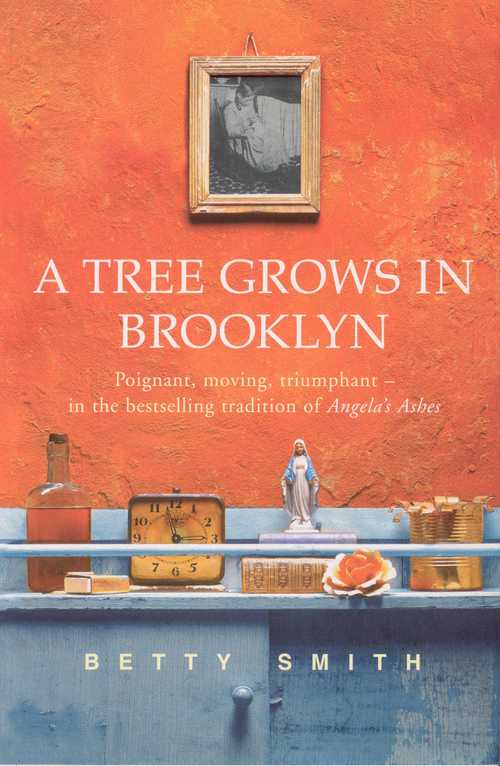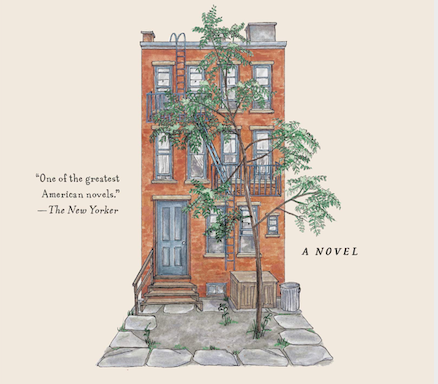A Tree Grows in Brooklyn
Betty Smith
May 02, 2020
A Tree Grows in Brooklyn by Betty Smith was published in 1943, and is now held up as an American classic alongside the works of Harper Lee, Steinbeck and Twain. It is studied in High Schools across the United States, and was rated by the New York Public Library to be one of their ‘Books of the Century’ in 1995. It was so popular upon it’s release, that an armed services edition was created - pocket-sized - to be taken into battle. That being said, I must admit when I was given it for Christmas last year - I’d never heard of it.
The novel is an engrossing easy-read, classified on most seller’s websites as for young adults. I think it’s appropriate for anyone interested in more contemporary American history though, with the engaging descriptions of Brooklyn in 1900-1917 acting as a bitter-sweet literary time-capsule. Although the novel is fictional, there is much to suggest that it is part auto-biographical, with Smith also a second generation immigrant, growing up in the slums of Brooklyn. Smith too, often frequented the local library, and developed a keen interest in reading from a young age.
The book is divided into five parts, with each section following the Nolan family. Four sections are focused on Francie at various ages throughout her childhood, and one section covers her parent’s relationship before herself and Neeley (her younger brother) were born.
Francie is a wall-flower. Through her, we experience early twentieth-century life in Brooklyn -from segregated pockets of migrant communities to the joy of a “fine fat pickle” after a week’s dining on stale bread and potatoes. The Nolan family live, like many, in abject poverty; scraping by and saving a dime here and there in the old condensed milk tin taped to the back of mama’s closet. Francie’s childhood is spent bartering with the local butchers, grocers and bakers. She’s scared of old age, and earns pennys for candy by collecting odds and ends and selling them to the scrap man. Summers are full of music, icecream, hot cracked pavements and dusty yard games; whilst winters are harsh and hungry.
Reminding me of the beloved character Scout in To Kill A Mockingbird, Francie is both street-smart and bookish, with an independent spirit. Her favourite place in the whole world is the third-floor fire escape attached to their little flat, where a Tree of Heaven - the kind that grows up through cement “in boarded up lots and out of neglected rubbish heaps” flourishes. On Saturdays, Williamsburg hot and serene, she collects her library book and sits up there, almost in the tree itself, with a little bowl of penny candy.
“It’s umbrellas curled over, around and under her third-floor fire-escape. An eleven-year-old girl sitting on this fire-escape could imagine that she was living in a tree.”
Whilst I’ve read some reviews that consider the story bleak and unforgiving; I found it left me with a resounding feeling of hopefulness. Published in a time of near ubiquitous racism, depression, severe poverty and divide across America, out steps this female writer with a coming-of-age novel still relatable today. She tells a tough narrative it’s true, with drunkardness, miscarriages, rape, hunger nearing starvation, cruelty and desperation - but Francie’s everyday experiences also contain rich, universal themes of resilience, beauty and love. She finds the humanity in her neighbours, the colour in their difficult lives, and throughout her struggles she has strength enough to overcome adversity and loss. In the end, this is an American dream story, with a focus on education as key to success - but also kindness, generosity and curiosity. It celebrates strong women and creative men, and little girls who dare to pursue happiness.
”People always think that happiness is a faraway thing” thought Francie, “something complicated and hard to get. Yet, what little things can make it up; a place of shelter when it rains - a cup of strong hot coffee when you’re blue; for a man, a cigarette for contentment; a book to read when you’re alone - just to be with someone you love. Those things make happiness.”

